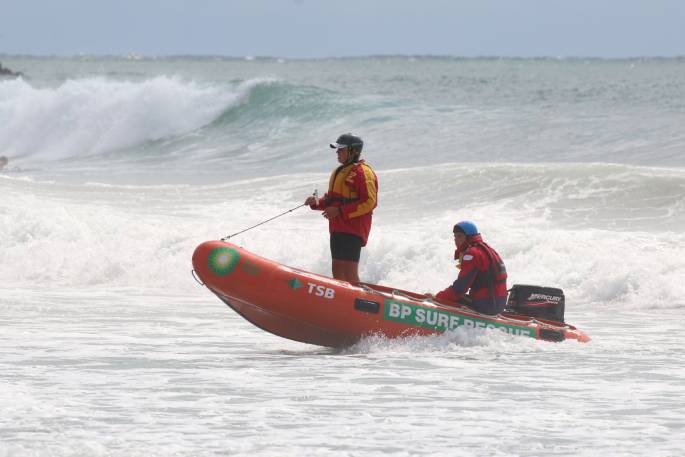Surf Life Saving New Zealand is calling for greater investment in beach and coastal safety education following a report published today outlining New Zealand's poor beach and coastal drowning rates.
On average, 36 people fatally drown every year on New Zealand's coastlines, according to the Beach & Coastal Safety Report published by SLSNZ with the figure on the increase.
There have been 33 fatal drownings in the Bay of Plenty during the 10-year period 2010 to 2020.
The last one-year overview, for 2019 to 2020, showed three fatal drownings in the region, matching the annual average fatal drownings for the BOP.
The national statistics are equally sobering.
'The number of fatal beach and coastal drownings in New Zealand has actually increased by 18 per cent over the past five years compared to the previous five years,” says SLSNZ chief executive, Paul Dalton.
'And our fatal beach and coastal drowning rate is 48 per cent worse, per capita, than Australia's.
'Every person who dies on our beaches and coastlines is someone with a whānau and a community who loves them and misses them. What's particularly gut-wrenching is that, as with the road toll, most fatal drownings are preventable.”
Paul says the vast majority of fatal beach drownings occurred on non-lifeguarded beaches, or outside of patrol hours. Swimming, 22 per cent, boating, 17 per cent, and falls, 17 per cent, made up the majority of activities being undertaken at the time that someone fatally drowned.
A staggering 87 per cent of victims were male.
Pasifika, Māori and Asian community members were the most over-represented in fatal drowning figures.
Geographically, Northland has the highest fatal beach drowning rate in New Zealand with 4.22 fatal drownings per 100,000 people, compared to 0.77 for Auckland. The Bay of Plenty's average sits at 0.91.
'It's time for us to think seriously, as Kiwis, about prevention and education when it comes to beach and coastal safety,” says Paul.
'We can't have surf lifeguards everywhere, so how are we going to approach this? Who's responsible? And who's going to pay for it?”
SLSNZ is a charity and, while the organisation does receive government funding towards frontline operational expenses, this funding does not cover public safety campaigns or education.
'Road, fire and boating safety have had significant investment in public education strategies and campaigns, which has reduced deaths and injuries and also raised awareness of the issues,” says Paul.
'It's now time to do the same for beach and coastal safety.
'It is no co-incidence that education and training is the first Strategic Priority in the recently launched New Zealand Water Safety Sector Strategy 2025.”
The Beach & Coastal Safety Report also offers a striking insight into the ‘ambulance at the bottom of the cliff' role that Surf Lifeguards play in keeping beachgoers safe in the face of a critical lack of public awareness around beach and coastal safety.
In the decade to 2020, Surf Lifeguards rescued more than 10,000 people on beaches and coastlines across New Zealand.
This astonishing figure does not include the almost 1,000,000 preventative actions taken by Surf Lifeguards on the beach, nor the 20,400+ first aid responses conducted by lifeguards over the same time period.
'These are incredibly sobering figures, but they're just part of the picture,” says Paul.
'Surf Lifeguards do more than patrol between the red and yellow flags over summer. Through emergency callout squads, they conduct search and rescue operations year round – often in difficult and dangerous conditions. Surf Lifeguards also utilise their skills in non-beach events, such as car crashes or medical events.”
Paul says the National Beach & Coastal Safety Report is SLSNZ's way of drawing attention to the importance of more public education as set out in the Water Safety Sector Strategy.
'As a volunteer-based organisation with a 111-year-old focus on beach and coastal safety, we are at the coalface of what could accurately be described as a major public safety problem,” says Paul.
'What the figures in this report tell us is that, had it not been for our volunteers, more than 10,000 people could have died from drowning on our beaches and coastlines over the past decade. That's more than twice the road toll for the same period.
'Fortunately, New Zealand's fatal beach and coastal drowning toll over this time period sits instead at 360. Yet, that's still 360 mums, dads, grandparents and children who died unnecessarily in an environment that should have been a source of joy, relaxation and kaimoana.
'Surf Life Saving New Zealand, are now saying it's time to do better.
'We are strongly supporting the Water Safety Sector Strategy in calling for greater investment in long-term, evidence based beach and coastal safety education. We can only do so much as the ambulance at the bottom of the cliff, we need better public education as the fence at the top.”



0 comments
Leave a Comment
You must be logged in to make a comment.